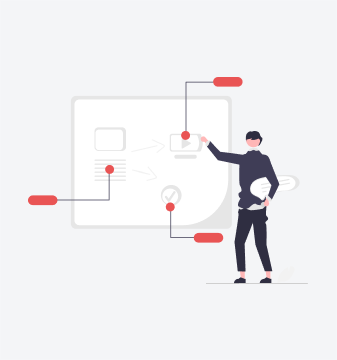Companies need good information to make smart decisions. Business research gathers useful data by asking questions and studying problems. Basic math only analyses simple data. However, companies have hard questions that require deeper answers. Advanced quantitative methods like text mining, econometrics, etc, take the research methodologies further. These complex analytical tools uncover insights hidden in the data and help businesses see patterns and make predictions.

Overview of Key Methods
Some of the key methods are stated below:
Machine Learning
Machine learning uses algorithms to identify patterns in data. The algorithms “train” on sample data to learn how to make predictions. This discovers hidden trends in huge amounts of facts. Smart models like neural networks help companies better predict the future.
Data Mining
Data mining searches through massive data sets to uncover useful gems. It uses complicated methods like cluster analysis and anomaly spotting. Data mining can segment customers and identify new opportunities. It digs up insights that would stay buried in the data piles.
Econometrics
Econometrics uses statistics to study money questions. It makes mathematical models to test ideas. For example, it can see how price shifts change buyer demand. It also connects small and large financial forces. This backs big-money decisions with hard evidence.
Text Mining
Text mining uses smart programs to pull key details from documents. Clever algorithms read text to identify keywords, emotions, and subjects. This allows researchers to systematically extract main themes from customer feedback, social media, etc. The insights learned can shape business plans and processes.
Network Analysis
Network analysis maps the connections in complex systems. It uses charts and mapping to study real-world networks. Business uses include fixing supply chains, modelling financial risk, and finding important people. It also locates weak points and key patterns in a company’s network.
Prescriptive Analytics
Predictive analytics tells what will occur next. Prescriptive recommends what to do about it. It mixes data, math models, and machine learning to suggest actions. It goes further than predictions to say the best next moves. This new practice leads to smarter business decisions.
Key Benefits for Organisations
Key benefits of advanced analytics include:
- Getting useful, actionable discoveries from data
- Finding trends, patterns and connections that are hard to spot
- Boosting the ability to predict future outcomes for better forecasting
- Locating opportunities for company growth and cost savings
- Dividing customers and markets for focused business plans
- Reviewing risks and weak areas across the whole organisation
- Staying competitive with new and advanced mathematical analysis approaches
Challenges and Risks
Some of the key challenges and risks which are observed are given below:
- Needs big investments in analytics tools and skilled staff
- Relies on the availability and quality of data
- Algorithms can repeat built-in data biases
- Analysis needs statistical experts to prevent misinterpretation
- May lead to over-trusting data vs human judgment
Conclusion
As technology advances, the ability to predict future outcomes will become more advanced. Approaches like deep learning and neural networks have great disruptive potential. However, analytics tools supplement human intelligence and experience, not replace them. By combining the strengths of people and machines, businesses can get the most value from data-driven insights. Companies that fail to adopt advanced analytics risk becoming less competitive. However, those in touch with these new quantitative approaches will be best placed to succeed in the modern data-driven economy.
FAQs
1. What are advanced quantitative methods?
They are complex mathematical and statistical analysis tools that uncover deep insights from data.
2. How do they help my business?
They help find useful patterns and make better forecasts to guide smarter decisions.
3. What skills do I need to use them?
You need data science and statistics experts to set up the analysis and translate the findings.
4. What are the main challenges?
They require significant investments in software, data infrastructure, and talented staff, and the analysis can also be difficult to interpret.
5. What if I don’t adopt these advanced methods?
If you fail to leverage these emerging quantitative tools, your business risks falling behind the competition as these become essential to success.




